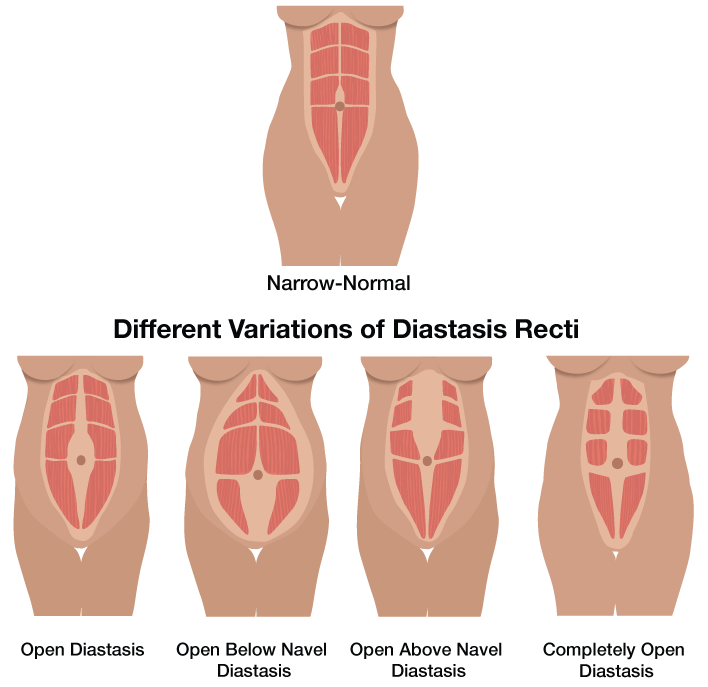Abdominal Separation
Are you worried that your stomach still looks a little pregnant a few months post-delivery? This is to be expected. Abdominal separation is a normal symptom of pregnancy. Don’t forget! – your body has supported life for the last nine months! Abdominal separation becomes a cause for concern when you start to suffer from pain in your abdomen and a slow return to your pre-pregnancy body. In this case you may have Diastasis Recti
As the uterus grows in pregnancy so too does the abdominal wall, thinning and stretching the muscles to allow for additional growth of baby, amniotic fluid, placenta and the uterus. Add with that the kidneys, stomach, intestines, liver and spleen! For some women this growth is all too much and causes a loss in muscle tone and inability to bounce back to their pre-birth abdomen.
Who is at risk of Diastasis Recti?
You are more likely to develop Diastasis Recti if you are:
- Petite
- Carrying twins (or triplets!)
- Are over the age of 35
- Have poor muscle tone
What Are The Symptoms of Diastasis Recti?
One of the most obvious symptoms is when you sit from a laying position and find your stomach protrudes into a cone or ridge as you sit up. This will hurt. Other symptoms may include:
- Weakening of the pelvic floor muscles
- Pelvic floor dysfunction (Incontinence)
- Pelvic pain and lower back pain
- Pain during intercourse
- Poor posture
- Umbilical hernia
- Inability to active the “core” muscles.
What Can Be Done to Help Diastasis Recti?
Gentle exercise can be reintroduced post-birth when your doctor has given you the green light. Light exercises that focus on working on the abdominal core can help with abdominal separation. Exercises such as holding a plank or laying on your back and doing leg raises will help to strengthen the abdominal muscles. Studies have suggested that doing sit-ups during pregnancy will not prevent abdominal separation and in many cases it actually increases the risk.
When to Consider Surgery
If severe, Diastasis Recti can be corrected by a surgical tummy tuck. This can be done privately if insured, or, if done in the public system you must meet the requirements necessary to be placed on the waiting list. Consider surgery the last resort. Surgical repair should only be done when you are absolutely sure you have completed your family.





